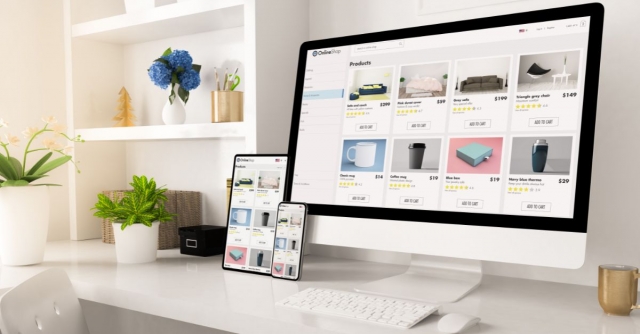How to Make a Website for Your Online Gift Shop
The e-commerce industry has experienced exponential growth, with more customers choosing online shopping for convenience, variety, and competitive pricing. For gift and souvenir shops, establishing an online presence is advantageous. Whether selling handmade crafts, personalized items, or curated gift boxes, a well-designed website can significantly expand your reach and increase sales.
This guide will discuss the steps in creating a website for your online gift shop, from planning and design to launching and beyond.
Importance of Having a Website for an Online Gift Shop
Global Reach: With a website, you can promote to more customers beyond your local area.
Accessibility: An online store is accessible to customers round the clock, breaking the constraints of traditional brick-and-mortar business hours.
Increased Sales Opportunities: By providing an easy-to-navigate platform for browsing and purchasing, you can capture sales from consumers who choose the convenience of online shopping.
Brand Building: A well-designed website helps establish your brand identity and credibility, promoting customer trust and loyalty.
Data Insights: Through analytics tools, you can find useful insights into customer behavior, preferences, and sales trends, which will help you make data-driven business decisions.
Overview of the Steps Involved
Crafting a website for your online gift shop involves several key steps:
Step 1. Plan Your Website
Before diving into the website development process, understand your niche market and identify your customers' preferences, needs, and shopping habits. Then, define objectives for your website, whether it's to drive sales, increase brand awareness, or expand your customer base. It would help if you also researched rivals in your industry to identify gaps in the market and opportunities for differentiation.
Step 2. Choose a Domain Name and Hosting Provider
Brainstorm a domain name that reflects your brand persona and is easy to remember and type. Once you've chosen a domain name, register it with a domain registrar and set up hosting to allow your site to be accessed on the internet. Evaluate hosting providers based on features, pricing, uptime guarantees, and customer support. If you already have a domain with another provider, make sure to transfer your domain name to your new hosting provider to ensure a smooth transition.
Step 3. Design Your Website
Choose a platform or CMS that suits your needs and technical expertise, such as WordPress, Shopify, or Wix. Browse various themes or templates designed specifically for online stores and select one that matches your brand aesthetic and functionality requirements. For instance, a vibrant and cheerful palette may be ideal for a food gift website, whereas hues like pink, yellow, and orange can effectively complement an online souvenir shop. More importantly, use professional tools for creating a logo, color scheme, typography, and website layout. If you need custom features or a unique design beyond standard templates, consider an online coder for hire to build and tailor your site according to your exact needs.
Step 4. Develop Content for Your Website
Craft detailed and persuasive product descriptions highlighting each item's features, benefits, and unique selling points. Leverage professional photography or videography to showcase your products in the best possible light, allowing customers to visualize their purchases. You should also optimize your website's content with valuable keywords, meta tags, and descriptions to increase exposure on search engine results pages.
Step 5. Set Up E-commerce Functionality
Choose a reliable payment gateway provider, such as PayPal or Stripe, to process online transactions securely. Ensure your payment gateway complies with industry security and data protection standards.
Next, integrate a user-friendly shopping cart system that enables visitors to add products, review their orders, and check smoothly. Streamline the checkout transaction by minimizing steps and offering multiple payment options.
Moreover, set up shipping options based on weight, destination, and shipping method. Provide transparent shipping rates and delivery estimates to avoid surprises at checkout. Consider integrating courier services to provide more accurate delivery tracking. You may also offer free shipping or promotional discounts to incentivize purchases.
Step 6. Test and Launch Your Website
Before launching your website to the public, test every aspect of your website, including navigation, functionality, forms, and payment processing, across different devices and browsers. Find and fix any bugs or issues to ensure a smooth user experience.
Improve website speed and responsiveness by optimizing images, minimizing code, and leveraging caching techniques. Ensure your site loads promptly on desktop and mobile devices to reduce bounce rates and improve search engine rankings.
Design a comprehensive marketing plan to promote your website launch and attract visitors. Utilize various networks such as social media, email promotion, search engine optimization (SEO), and paid advertising to push traffic to your site.
Step 7. Monitoring and Maintenance
Once your website is live, install analytics tools like Google Analytics to see website traffic, consumer behavior, and sales performance. Monitor critical metrics regularly to identify trends, track your marketing campaigns, and make data-driven decisions.
Keep your website fresh and captivating by regularly updating product listings, blog posts, and other content. Introduce new products, promotions, and seasonal offerings to entice customers and encourage repeat visits.
You should also protect your website from security threats by installing plugins, using secure hosting, and keeping software up to date. Schedule regular backups to safeguard against data loss and ensure quick emergency recovery.
Step 8. Scale and Grow Your Online Gift Shop
Always monitor website metrics to identify areas for improvement and optimization. Use insights from analytics to refine your promotional strategies, adjust product offerings, and enhance the overall customer experience.
Diversify your product catalog by adding new categories, variations, or complementary items. It would help if you also cultivated strong customer relationships through personalized communication, loyalty programs, and exceptional customer service. Interact with your consumers on social media, respond to inquiries promptly, and seek feedback to promote loyalty and advocacy.
Recap
In summary, creating a website for your online gift shop involves careful planning, strategic decision-making, and ongoing optimization. By following the steps outlined in this guide – from planning and design to launch and beyond – you can solidify your online presence, attract customers, drive sales, and cultivate long-term growth.






